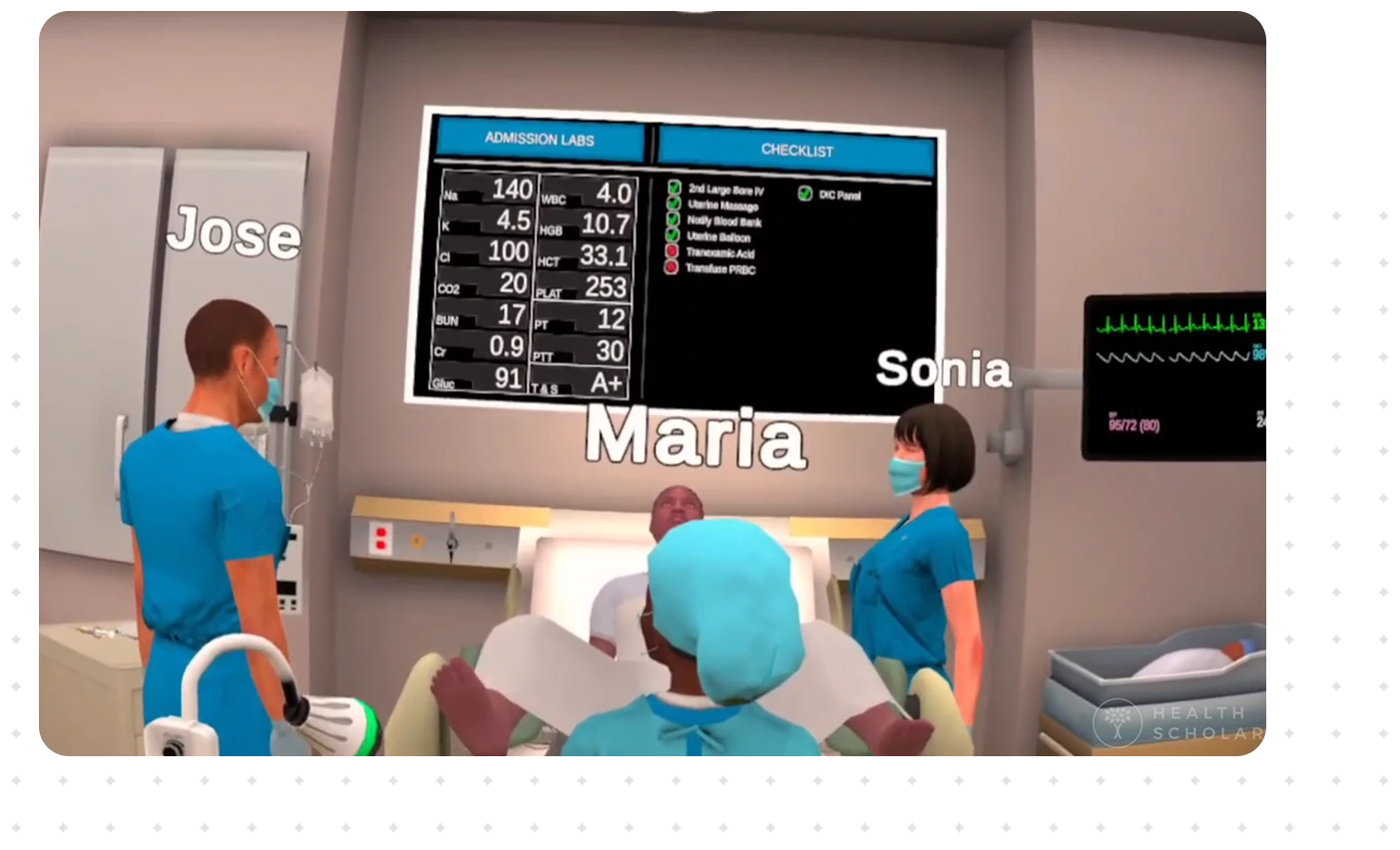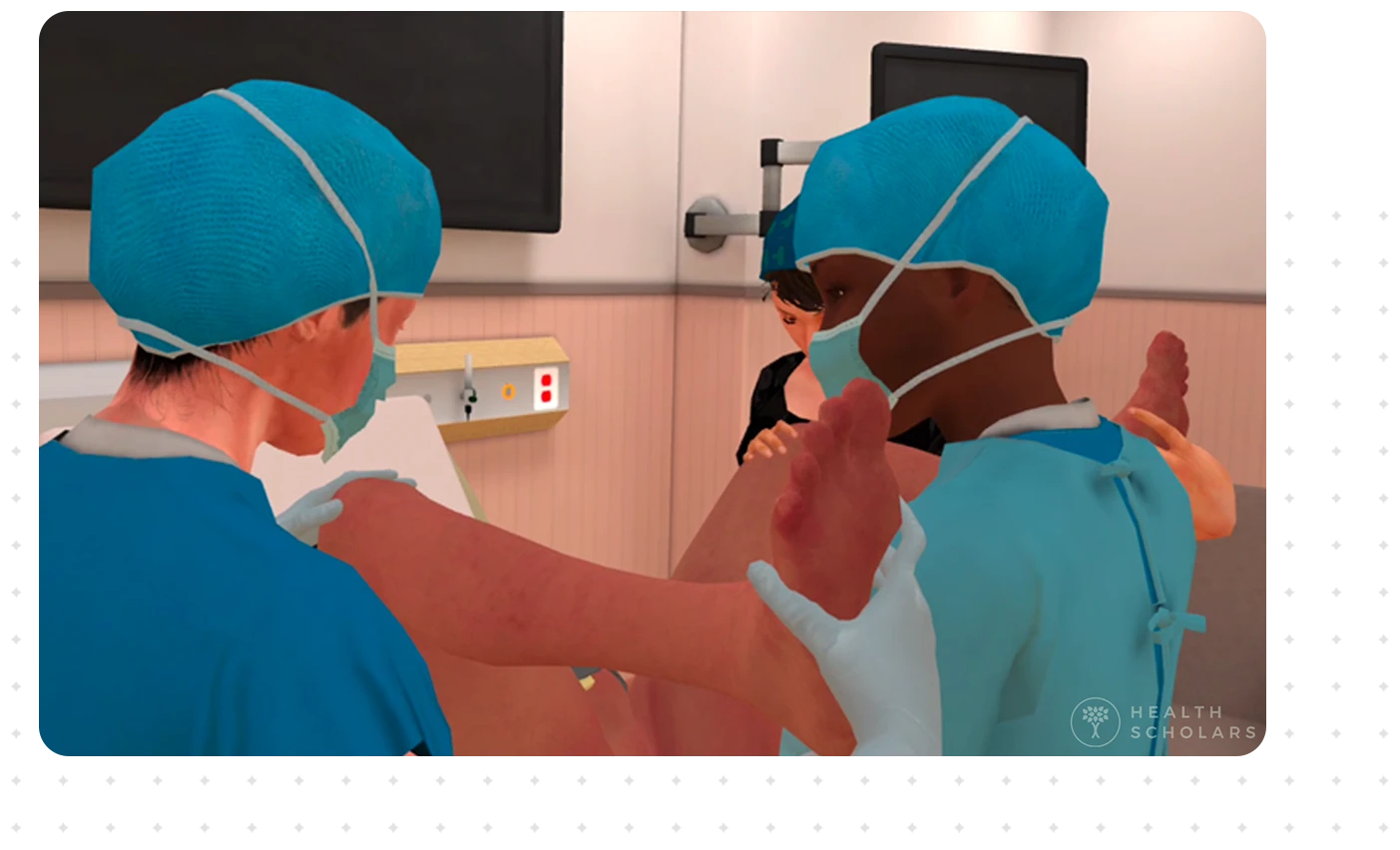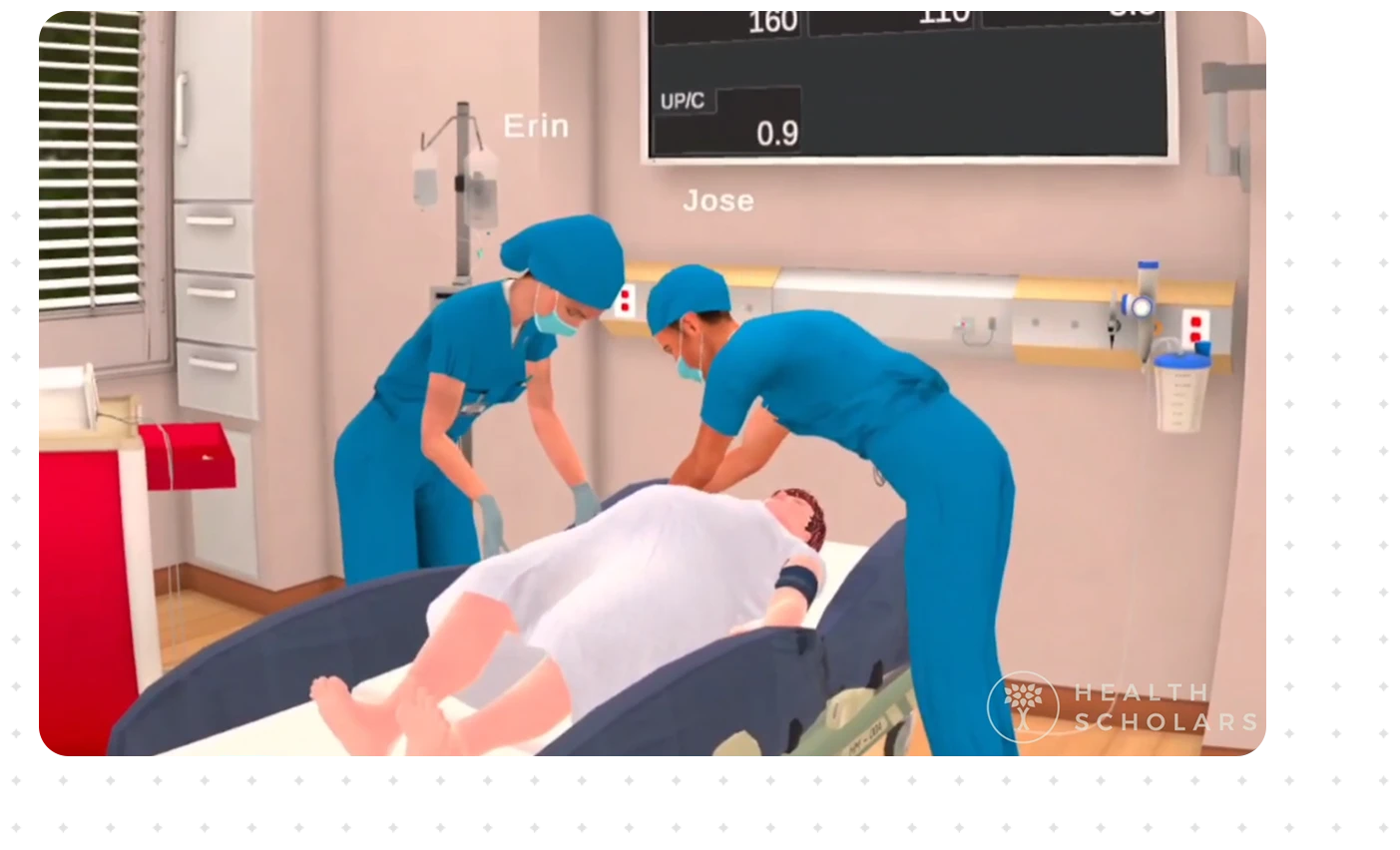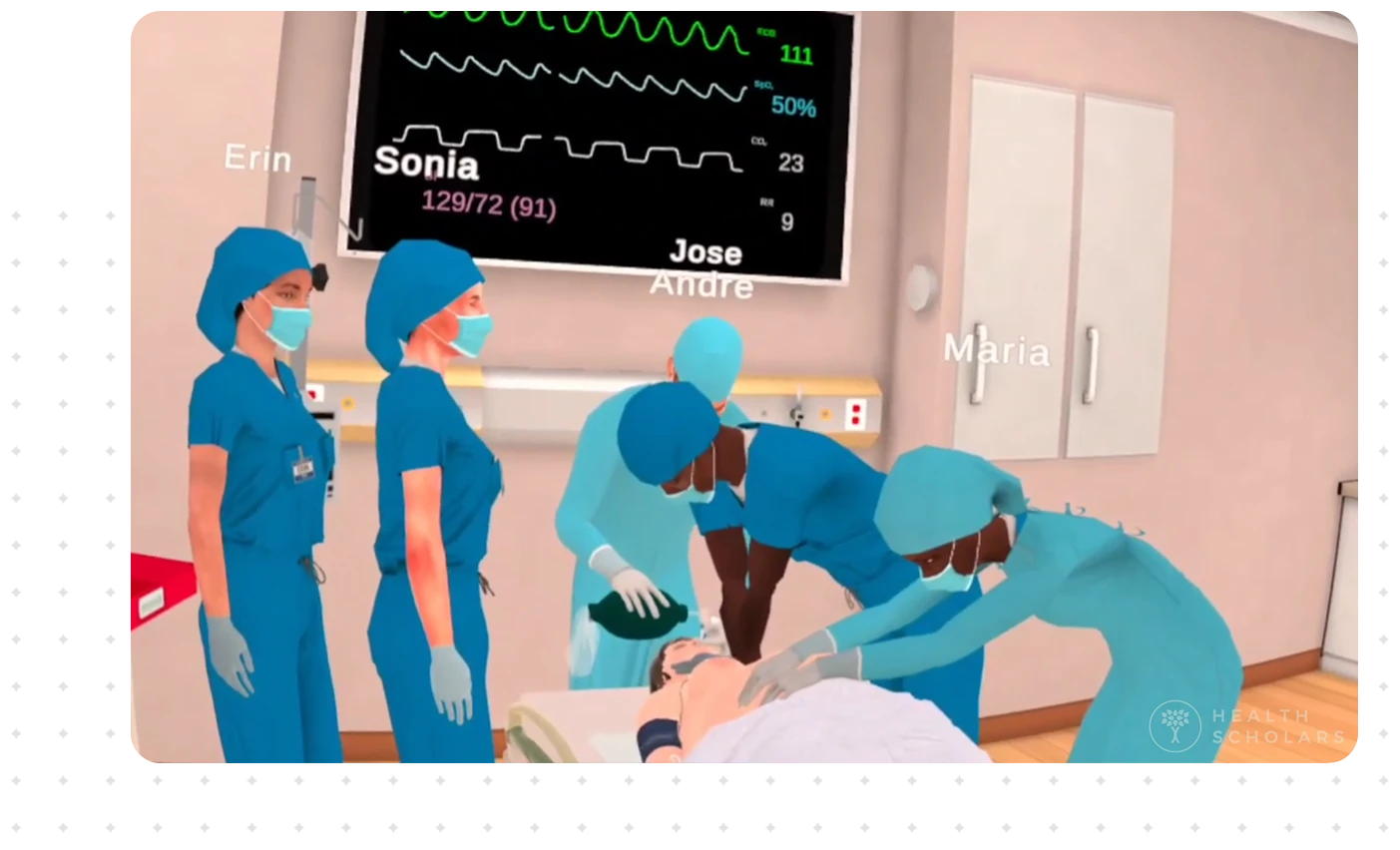Four out of five maternal deaths pregnancy-related are preventable– be the difference
This suite of labor and delivery training applications is custom created to address the highest risk areas and maternal mortality to improve the outcomes of birth givers and children.
Obstetric Hemorrhage
Maternal hemorrhage is one of the leading causes of maternal deaths worldwide
Providers need to have the competencies requisite to identify and manage a patient experiencing a postpartum hemorrhage, with obstetric hemorrhage leading to 25% of patient deaths.

Shoulder Dystocia
Practice a realistic shoulder dystocia scenario from recognition through successful birth
Shoulder dystocia can be both physically and emotionally traumatic for birth givers. Do your part in adequately preparing for scenarios to help to continue to improve patient outcomes.

Obstetric Emergencies
Increase clinician procedural memory, decision making, and time management
Clinicians need to have the competencies requisite to identify and manage a patient experiencing maternal code and other obstetric emergencies, enacting life saving measures for times of crisis.


We found that VR based training was superior to video based training in enhancing performance in a simulated fire scenario. Those who underwent VR training recognized the issue more quickly and were more likely to appropriately douse the flame and protect the patient when compared to those who had video based training.
Daniel Katz MD,
Director of Education Mount Sinai HELPS Center

Our public health system is proud to be a leader in virtual reality simulations that ensure our providers have the life-saving skills necessary during these situations. Being able to provide convenient, easily accessible, on-site, and realistic simulations is imperative when you want to both provide these important skills-building opportunities without disrupting any patient care.
Being able to offer a diverse suite of high-tech simulations that not only realistically portray the medical scenario, but also reflects what our workforce and patients look like is an important part of training our staff to provide the highest quality, expert care no matter the situation the arises in the delivery room.
Wendy Wilcox, MD, MPH, MBA, FACOG,
Chief Women's Health Services Officer,
NYC Health + Hospitals

Why VR for healthcare training?
Virtual Reality, or “VR,” uses computer technology to create a simulated, three-dimensional environment for exploration and instruction. Check out our blog on how VR functions as a cost-savings training tool.

